No one wants dark spots, and everyone wants to know how to get rid of them. This blog will teach you everything you need to know about dark spots - from their definition to the different treatments dermatologists use for removing them. You'll also learn about the side effects of using various dark spot removal creams for pigmentation, as well as tips on how to apply them correctly for the best results. So whether you're looking to lighten or remove a dark spot, start reading now!
Sun exposure, hormonal changes, inflammation, skin traumas, and certain drugs can all cause dark patches, also known as hyperpigmentation, to form on the skin. These spots are usually harmless, although they can be a cosmetic concern for many people. This blog provides information on the causes and treatment alternatives.
What are dark spots?
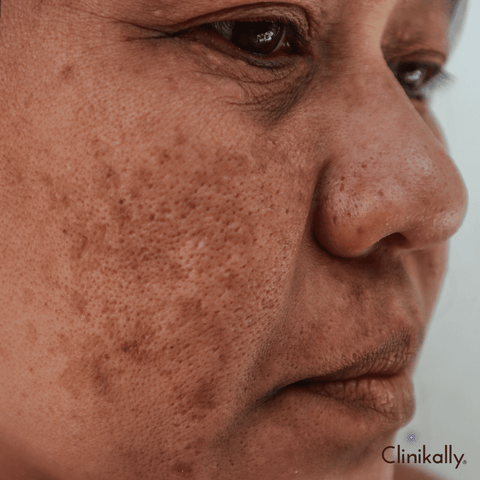
Everyone experiences dark spots from time to time, but for some, they can be a sign of a more serious skin condition. Dark spots are small, dark patches on the skin that can vary in size and shape. They can be caused by a number of factors, including age, sun exposure, skin tone, and acne.
If you notice any dark spots on your skin, it's important to consult with a doctor or dermatologist. You can visit your nearby dermatology clinic or even get a quick and easy online dermatologist consultation. Depending on the cause, treatment may involve topical creams and injections, light therapy, and surgery. Be patient - results may take several weeks or months to show improvement. And most importantly, make sure to keep track of your progress!
What are the causes of dark spots?

If you are like most people, the appearance of dark spots on your skin has probably perplexed you. These spots, which are the result of sun damage, can occur on any skin type. However, they tend to be more common in darker skin tones. Below are some of the major causes of dark spots among Indian people:
-
Sun damage or long-term tanning caused by prolonged exposure to UV radiations
-
Hormonal changes caused by age, pregnancy, or other natural changes in the body
-
Irritation of the skin caused by prolonged use of makeup, cosmetics, or low-quality skincare products
-
Onset of diabetes accompanied by other changes, such as darkened skin tone
- Inflammation of skin caused by skin conditions such as eczema, psoriasis, etc.
Preventive Measures:
-
Sun Protection: Applying high-SPF sunscreen, wearing protective clothing, and seeking shade can all help to prevent sun-induced dark spots.
-
Skin Trauma Avoidance: Treating skin conditions gently and avoiding picking or scratching can lower the risk of post-inflammatory hyperpigmentation.
-
Hormonal Management: For those who are prone to hormonal-related dark spots, managing hormonal fluctuations under medical supervision can help prevent or reduce the occurrence of these spots.
Understanding the underlying cause of dark spots is essential for determining the most effective treatment technique. A dermatologist can provide personalised advice and treatments for hyperpigmentation based on the individual's skin type and condition.
Differences between dark spots, sunspots, and melasma

Dark spots, sunspots (also known as solar lentigines or age spots), and melasma are all different types of skin diseases with different causes, looks, and locations on the skin.
-
Dark Spots: Dark spots, also known as hyperpigmentation, are caused by an excess of melanin, the pigment responsible for skin color. Sun exposure, inflammation, hormonal fluctuations, skin traumas, and drugs can all cause them. Dark spots develop on the skin as small, localised patches that are darker than the surrounding skin. They might be light brown to black in color and can appear anywhere on the body.
-
Sunspots (Solar Lentigines or Age Spots): Sunspots are caused mostly by extended exposure to the sun's ultraviolet (UV) rays. They are a form of black spot induced by sun exposure and commonly appear as people age. Sunspots are flat, round, or oval-shaped spots that occur on sun-exposed parts such the face, hands, shoulders, and arms. They range in size and colour from light to dark brown.
-
Melasma: Melasma is a common skin condition caused by hormonal fluctuations, specifically oestrogen and progesterone. It is most common during pregnancy (chloasma, or "mask of pregnancy") or as a result of hormonal medicines or therapies. Melasma manifests itself as larger, symmetrical patches of darker skin, most commonly on the face. These brownish-gray or tan patches are often present on the forehead, cheeks, upper lip, and chin.
Differences:
-
Causes: Sun exposure, inflammation, hormones, or drugs can all cause dark spots, with sunspots being the most common. Melasma is primarily caused by hormonal fluctuations.
-
Appearance and Location: Dark spots can appear as small, localised patches anywhere on the body. Sunspots typically occur on sun-exposed areas like the face, hands, and arms. Melasma, on the other hand, presents as larger, symmetrical patches, mainly on the face.
-
Underlying Factors: While all three conditions involve an increase in melanin production, which results in darkened areas, their causes and triggers differ significantly.
Treatment methods for these illnesses may differ. Dermatologists can prescribe therapies that are customised to the underlying cause of hyperpigmentation, whether it's dark spots caused by inflammation, sunspots caused by sun exposure, or melasma caused by hormonal changes. Consultation with a dermatologist is required to identify the best treatment plan for each problem.
How long do dark spots last?
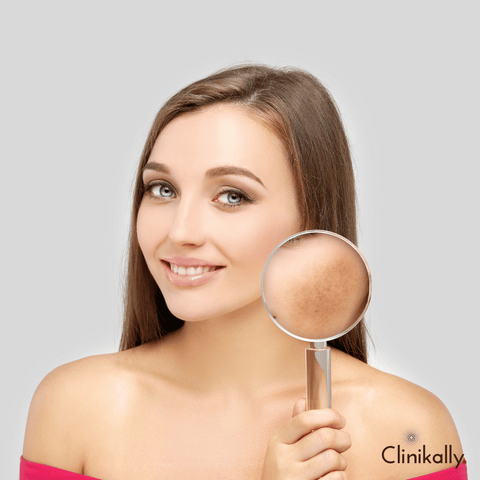
The longevity of black spots varies greatly depending on various factors, including the etiology of the spots, individual skin characteristics, and the treatment approach used.
Factors Influencing Duration:
-
Cause of Dark Spots: The underlying cause of the dark spots is important. For example, dark spots caused by temporary factors such as post-inflammatory hyperpigmentation (acne, injury, or inflammation) may fade over a period of weeks to months as the skin heals.
-
Chronic Conditions: Conditions such as melasma or sunspots, which are caused by ongoing factors such as sun exposure or hormonal changes, can last for a long time or even become chronic if not treated properly.
-
Skin Type: The duration of dark spots varies depending on the skin type. Individuals with more melanin-rich skin may notice that dark spots fade more slowly than those with lighter skin tones.
-
Treatment: The duration of dark spots can be affected by the treatment chosen and its effectiveness. Some treatments, such as topical creams or professional procedures (e.g., chemical peels, laser therapy), can significantly reduce the appearance of dark spots over time.
Approximate Duration:
-
Temporary Dark Spots: Post-inflammatory hyperpigmentation caused by mild skin trauma or acne may fade within a few weeks to a few months, especially with proper skincare and treatment.
-
Chronic or Persistent Dark Spots: Conditions such as melasma or long-standing sunspots can last for months or years if not treated and protected from the sun.
It is important to note that the appearance of dark spots can improve gradually. Following the recommended treatment plan consistently, protecting the skin from sun exposure, and using appropriate skincare products can all help to speed up the fading of dark spots. A dermatologist is highly recommended for personalised advice on managing dark spots and determining the best treatment approach. They can assess the condition and recommend treatments based on your skin type and the cause of the hyperpigmentation.
How do dermatologists treat dark spots?

If you're like most people, you're familiar with dark spots - those unsightly spots on the skin that can be bothersome and even embarrassing. Dark spots are a common and natural part of ageing skin, but that doesn't mean you have to suffer from them.
Dark spots can be caused by a variety of factors, so it's important to consult with a dermatologist if they occur. They will be able to determine the cause and prescribe the best treatment plan for you. In some cases, dark spots may require surgery. Dermatologists may use light therapy or chemical treatments to fade dark spots. Remember that dark spots are part of the natural ageing process, so don't be discouraged! Keep your skin healthy and beautiful by following a few easy skincare tips.
Keep in mind that dark spots may reoccur after treatment is complete - don't be discouraged! There are a few things you can do to help prevent them from forming in the first place. For example, use sunscreen every day and avoid excessive tanning. Additionally, reduce your exposure to the sun by wearing a sunscreen with SPF 50 that is Broad Spectrum and PABA-free. If you're already experiencing dark spots, don't hesitate to consult a dermatologist for a treatment that will reduce their severity.
How to apply a dark spot removal cream
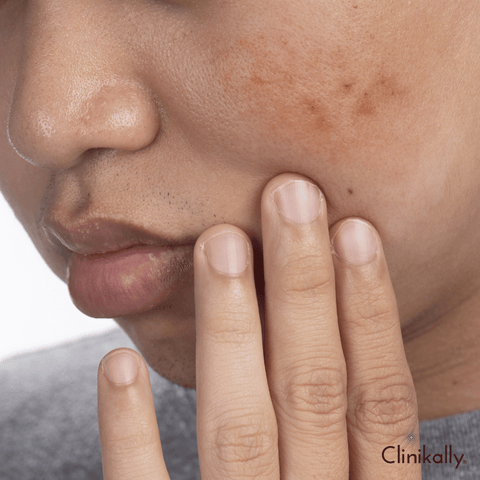
No one wants to have dark spots on their skin - they're a sign of ageing and make you look unappealing. But fret not, because there are many remedies available that can help improve the appearance of dark spots. Remember that the best dark spot removal cream is the one that will treat your pigmentation effectively and safely!
Before applying your cream for pigmentation, make sure you read the instructions carefully and follow them. Many of these treatments use topical products that need to be applied twice daily, which can be a drag. However, if you're seeing dark spots on your skin, it's important to consult a dermatologist for treatment. Some creams require overnight application, but these are generally more effective than those that take just two hours to work. So, don't hesitate to seek the help of a professional to get your dark spots under control!
Here's a step-by-step guide to using a dark spot removal cream:
Preparation:
-
Cleanse the Skin: Begin by cleansing the skin with a gentle cleanser to remove dirt, oil, and makeup. Using a clean towel, pat yourself dry.
-
Patch Test: Conduct a patch test by applying a small amount of the dark spot removal cream to a small area of skin to check for any allergic reactions or irritation. Before applying it to larger areas, wait 24 hours to ensure there is no adverse reaction.
Application Steps:
-
Apply a Thin Layer: Using your fingertip or a cotton swab, apply a pea-sized amount of the dark spot removal cream.
-
Spot Treatment: Apply the cream to the dark spots or hyperpigmented areas directly. Instead of rubbing it in, dab or dot the cream onto the spots.
-
Spread the cream evenly: If you are applying it to multiple spots, make sure it is distributed evenly without rubbing the skin too much. Avoid using it in areas that are not affected.
-
Massage gently: Using light, circular motions, massage the cream into the skin until it is absorbed. Be gentle, especially if you have sensitive skin.
-
Follow Instructions: Follow the manufacturer's or your dermatologist's specific instructions for frequency of application (usually once or twice daily) and duration of use.
Aftercare:
-
Sun Protection: Wait for the cream to fully absorb into the skin before applying sunscreen during the day. Sunscreen with an SPF of 30 or higher is essential to prevent further sun-induced darkening of spots.
-
Consistency: Apply the dark spot removal cream as directed on a regular basis. Results may take weeks or months to appear, so patience and consistency are essential.
Individual reactions to dark spot removal lotions can vary. A dermatologist can propose the most appropriate treatment based on your skin type and individual problem, so see one for personalised guidance on product selection and application.
Side effects of using a dark spot removal cream
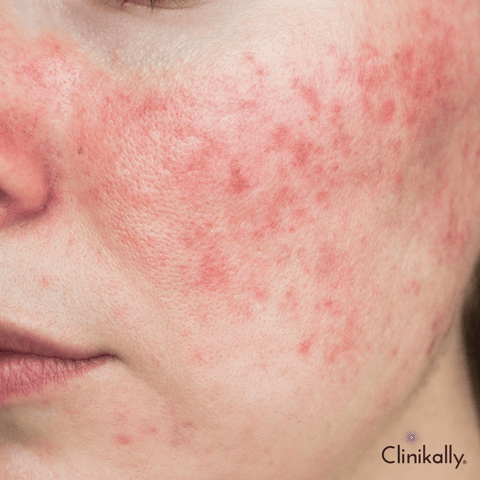
There's no doubt that dark spots are a major problem for many people. They can be a major source of anxiety and can impact a person's self-esteem. Fortunately, there are a number of ways to get rid of these spots. But be aware of the potential risks and benefits of using a dark spot removal cream, and speak with a doctor before using it.
In addition to removal, these products are also designed to improve the skin's appearance. However, be aware that overuse of these products may cause side effects. So, before using any type of spot treatment, be sure to talk to a doctor to get the safest and most effective route. Dermatologists will be able to suggest the most effective dark spot removal creams that are also safe for your skin - based on your skin type and specific concerns. While not everyone will experience side effects, the following are some examples of potential negative reactions:
-
Irritation of the skin: This can manifest as redness, itching, burning, or stinging sensations at the application site. Some people may have sensitive skin that reacts negatively to the cream's ingredients.
-
Dryness or peeling: Some dark spot removal creams, particularly those containing retinoids or hydroquinone, may cause skin dryness, flakiness, or peeling, particularly in the early stages of use.
-
Increased Sun Sensitivity: Certain ingredients, such as retinoids, may make the skin more sensitive to sunlight, increasing the risk of sunburn. It is critical to use sunscreen during the day to protect the skin.
-
Allergic Reactions: If you are allergic to specific ingredients in the cream, you may experience allergic reactions such as hives, rash, or swelling. Prior to regular application, a patch test can help identify potential allergies.
-
Post-Inflammatory Hyperpigmentation: In some cases, particularly if the cream is not appropriate for your skin type or is used incorrectly, it may worsen hyperpigmentation, resulting in new spots or uneven skin tone.
Tips for Minimising Side Effects:
-
Before applying the product to a larger area of skin, perform a patch test to check for any adverse reactions.
-
Follow the manufacturer's or your dermatologist's recommendations for the frequency and amount of cream to use.
-
Begin with a small amount and work your way up if your skin tolerates the product well.
-
Use an SPF 30 or higher sunscreen during the day to protect your skin from sun damage, especially if you are using creams that may increase sun sensitivity.
If you have severe or persistent side effects, such as severe irritation, blistering, or significant discomfort, stop using the product and see a dermatologist. They can evaluate your skin, offer advice, and suggest alternative treatments or changes to your skincare routine to address dark spots safely and effectively.
The importance of sunscreen in preventing dark spots
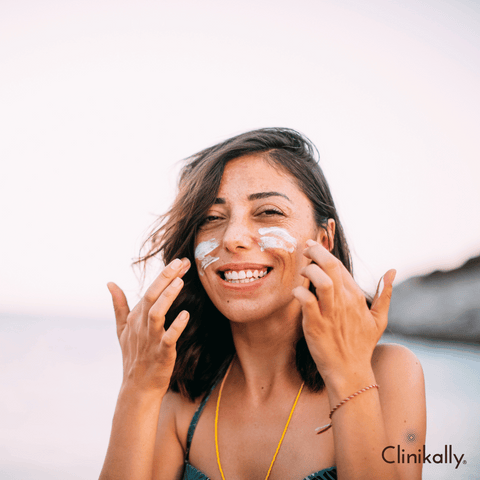
Sunscreen is essential for preventing dark spots and other forms of hyperpigmentation. Here's why:
Protection Against UV Rays:
-
Prevents Sun-Induced Dark Spots: The sun's ultraviolet (UV) radiation is a major cause of dark spots, sunspots, and general hyperpigmentation. Sunscreen reduces the risk of developing new dark spots by blocking these harmful UV rays.
-
Reduces Melasma and Post-Inflammatory Hyperpigmentation: For people who are prone to melasma or post-inflammatory hyperpigmentation, using sunscreen on a regular basis can help keep these conditions from worsening due to sun exposure.
Sunscreen's Advantages in the Prevention of Dark Spots:
-
Reduces Melanin Production: Sunscreens with broad-spectrum protection (against both UVA and UVB rays) inhibit melanin production caused by UV exposure, reducing the formation of dark spots.
-
Prevents Sunburn and Skin Damage: Sunburn can aggravate existing dark spots and cause new hyperpigmentation. Regular use of sunscreen helps prevent sunburn and related skin damage, lowering the risk of dark spots.
-
Promotes General Skin Health: Using sunscreen lowers the chance of wrinkles, skin cancer, and premature ageing brought on by UV damage in addition to preventing dark spots.
Tips for Effective Sunscreen Use:
-
SPF and Broad-Spectrum Protection: To protect against UVA and UVB rays, use a broad-spectrum sunscreen with an SPF of 30 or higher.
-
Regular Application: Apply sunscreen liberally and reapply every two hours, especially if sweating or swimming.
-
Everyday Use: UV rays can penetrate the skin even on cloudy days or during the winter. Thus, regardless of the weather, apply sunscreen every day.
-
Cover Exposed Areas: Apply sunscreen to all exposed skin areas, including the face, neck, arms, and any other exposed parts of the body.
Importance of Consistency:
Sunscreen application should be done on a regular basis to avoid dark spots caused by sun exposure. While sunscreen can help protect against future damage, it is critical to use it in conjunction with other preventive measures and therapies to properly remove existing dark spots. You may dramatically lower the risk of developing new dark spots and maintain healthier, more even-toned skin over time by incorporating sunscreen into your daily skincare routine.
Laser treatments and microdermabrasion for dark spots
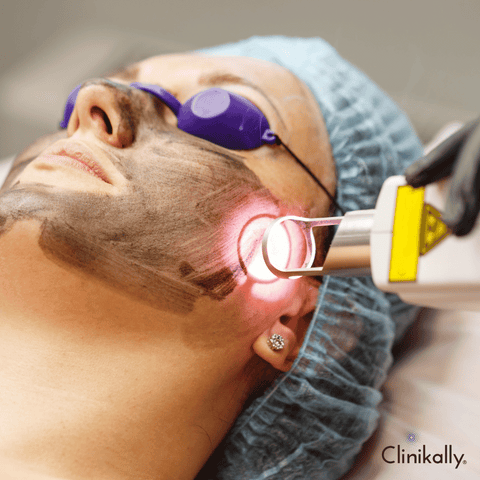
Dermatologists utilise both laser treatments and microdermabrasion to treat dark patches (hyperpigmentation) and enhance general skin texture. However, their processes and approaches to hyperpigmentation differ.
Laser Treatments:
-
How They Operate: Laser treatments target particular skin pigments with concentrated light beams. Several kinds of lasers can target melanin in areas of darkness, dissolving the pigment so that the body can absorb and get rid of it.
-
Types of Lasers: Depending on the kind, intensity, and depth of the dark spots, different types of lasers, such as Q-switched lasers, fractional lasers, or intense pulsed light (IPL), can be used.
-
Benefits: Skin tone is more effective even after laser treatments because they are accurate and can target darker pigmentation. They can also increase collagen production, which improves skin texture and appearance.
-
Considerations: Depending on the laser type used, some people may experience mild redness, swelling, or temporary darkening of the treated areas. Multiple sessions may be required for the best results.
Microdermabrasion:
-
How It Works: Microdermabrasion is a non-invasive procedure that exfoliates the outer layer of the skin with a handheld device, removing dead skin cells and promoting the growth of new, healthier skin cells.
-
Benefits: It improves skin texture, reduces the appearance of fine lines, and can help fade dark spots by gently exfoliating the skin's surface.
-
Treatment Depth: Microdermabrasion is a relatively superficial treatment that may not be as effective as laser treatments for deeply pigmented or stubborn dark spots.
Choosing Between the Two:
-
Hyperpigmentation Severity: Laser treatments are often more effective for severe or deeper hyperpigmentation, whereas microdermabrasion may be appropriate for mild to moderate cases or as part of a maintenance routine.
-
Skin Sensitivity: Microdermabrasion is generally gentler and suitable for most skin types, whereas laser treatments may necessitate special care for people with sensitive skin.
-
Downtime and Recovery: While laser treatments may involve some downtime and potential side effects, microdermabrasion typically involves little downtime and fewer side effects.
Consultation with a Dermatologist:
A dermatologist must do a comprehensive examination to determine the best treatment choice for dark spots. They can evaluate your skin type, hyperpigmentation intensity, and other characteristics to offer the most effective treatment or combination of therapies tailored to your unique requirements and goals.
Fade dark spots with personalised treatment

Dark spots are a common problem that can be difficult to treat. However, with the help of a dermatologist, you can achieve a noticeable improvement in the appearance of your skin. In this blog, we have outlined the different causes of dark spots and the various treatments that are available. We have also included tips on how to apply a dark spot removal cream safely and effectively. So why wait? Start treating your skin today on Clinikally with the help of India's best dermatologists!
Treating and fading dark spots (hyperpigmentation) frequently necessitates customised approaches based on an individual's skin type, the cause of hyperpigmentation, and the severity of the spots. Here is a customised course of treatment that a dermatologist might suggest:
-
Consultation and Assessment: Make an appointment with a dermatologist for a thorough examination of your skin issue. The dermatologist will evaluate the type of dark spots, the cause of the spots, and your skin type. Determine whether your dark patches are the result of sun exposure, hormonal changes, post-inflammatory hyperpigmentation, or something else.
-
Personalised Treatment Plan: The dermatologist may prescribe or recommend specific topical therapies based on the assessment, such as Hydroquinone and Retinoids, Vitamin C or Kojic Acid, and Azelaic Acid or Niacinamide. Depending on the severity of the condition, a combination of topical therapies may be prescribed for improved efficacy. For more obstinate or deeper black spots, laser treatments (such as Q-switched lasers), chemical peels, microdermabrasion, or intense pulsed light (IPL) therapy may be recommended.
-
Sun Protection and Skincare: Use broad-spectrum sunscreen with an SPF of 30 or higher on a regular basis to protect the skin from further UV damage and to keep dark spots from getting worse. Use a gentle skincare routine that is appropriate for your skin type. Avoid using harsh products that can aggravate pigmentation concerns.
-
Regular Follow-ups: Make follow-up meetings with your dermatologist to check the treatment plan's success and make any required adjustments.
-
Lifestyle Modifications: Maintain a healthy lifestyle by eating a balanced diet, being hydrated, and getting enough sleep, as these variables all contribute to general skin health.
Important Considerations: It can take longer to treat dark stains. Consistency with the suggested treatment schedule is critical, and benefits may not be apparent right away. Because of variances in skin type and the underlying cause of hyperpigmentation, what works for one person may not work for another.
DIY home remedies vs. dermatologist-recommended products

Both DIY home remedies and dermatologist-recommended products have a place in skincare, but they differ in terms of efficacy, safety, and capacity to address specific skin conditions.
DIY Home Remedies:
-
Natural Ingredients: Many DIY remedies involve the use of common household items such as lemon juice, honey, yoghurt, turmeric, aloe vera, or apple cider vinegar.
-
Cost-effective: They are generally less expensive than specialised skincare products on the market.
-
Limited Scientific Evidence: Although there is anecdotal evidence supporting the effectiveness of some home remedies in improving the appearance of skin, many of them lack scientific backing. The treatments suggested by dermatologists might be more dependable and consistent than these.
-
Potential Risks: Particularly for skin types with sensitivity, certain home cures may be too harsh on the skin or result in allergic reactions. Improperly formulated mixtures or strong natural ingredients (such as lemon juice) can irritate or even damage the skin if used incorrectly.
Dermatologist-Recommended Products:
-
Scientifically Formulated: Dermatologists' recommended skincare products are rigorously tested, contain specific active ingredients, and are formulated based on scientific research.
-
Targeted Solutions: These products are intended to treat specific skin issues such as acne, dark spots, wrinkles, and dryness. They frequently include key ingredients in precise concentrations for maximum effectiveness.
-
Safety and Efficacy: Dermatologist-recommended products are usually tested for safety and efficacy, and they may go through clinical trials to prove their benefits for specific skin issues.
-
Personalised Recommendations: A dermatologist can evaluate your skin type and concerns, then provide personalised recommendations that are tailored to your specific needs, resulting in better outcomes.
Considerations:
-
Skin Sensitivity: Some DIY remedies may be gentler or more suitable for people with less sensitive skin. Skin types, including sensitive skin, can be catered for with dermatologist-recommended products.
-
The severity of Concerns: Treatments prescribed by dermatologists may provide more effective and specialised care for more severe skin conditions like deep wrinkles, recurrent acne, or obstinate dark spots.
The role of vitamins, especially vitamin C, in treating dark spots

Vitamin C is a vital skincare element because of its ability to eliminate dark spots, brighten the skin, and improve general skin health. Incorporating Vitamin C-based products into your skincare routine, in addition to other appropriate treatments, will help to fade dark spots and achieve a more even complexion. A dermatologist can provide you personalised advice on how to use Vitamin C and other helpful therapies for your unique skin type and concerns.

















1 comment
Vilvah
Thank you for sharing your thoughts and insights on your blog. I always enjoy reading your posts."
Thank you for sharing your thoughts and insights on your blog. I always enjoy reading your posts."